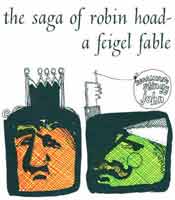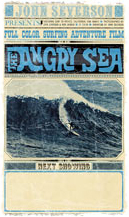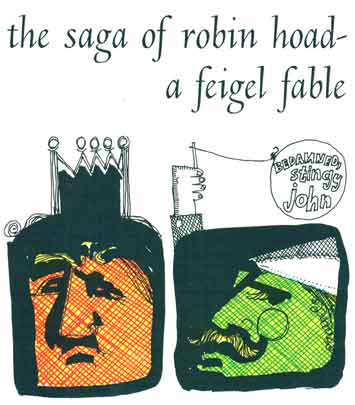|
|
|
|
Note: A more comprehensive and detailed text-only account of Surfguide Magazine's rise and fall can be opened by clicking this link: Death of a surf mag |
|
The Rise & Fall of Surfguide Magazine - RIP The first surfing magazine was published in California by photographer & film maker John Severson and his wife in 1960. It was called Surfer and as surfing grew in popularity, the magazine's sales continued to increase. By 1963, when I joined Surfguide Magazine, there were already three other California based magazines besides Surfer: Walt Phillips' Surfing Illustrated, Dick Graham's International Surfing and Peterson's Surfing. Surfing had been growing in leaps and bounds ever since the Hollywood film, Gidget, captured the imagination of 'youth market'. While more people tried surfing, more people became involved in the business of making surfboards and accessories. There were more clubs, more contests, more surf films, more surf travel and more for surf magazines to write about. |
|
|
Above right:
Cover of the
November
|
It was a Los Angeles City Lifeguard named Larry Stevenson who came up with the idea for making a skateboard that looked like a surfboard. One summer while sitting in his tower he noticed the similarity between the skills involved in each activity and made the connection. At first, Larry and his wife Helen put the skateboards together at home in their garage. As Makaha skateboard sales increased, Larry started looking for a way he could promote his product as well as the emerging 'sport' of skateboarding and the competition team he was thinking of forming. As the story goes, Larry was at the printers picking up some posters for a surf film he was showing at a local auditorium when he met Bill Cleary, co-author of the 'Surfing Guide to Southern California'. They started talking and Surfguide Magazine was born. My original role at the magazine was to manage the Makaha Skateboard Exhibition Team. That role soon expanded to include the public relations for both the team and the magazine. Within a few months I was also selling advertising, designing ads and writing a series of satirical parodies called Feigel Fables. To everyone's surprise, Feigel Fables became Surfguide's most popular regular feature and ended up generating more fan mail than any other subject during the magazine's brief but distinguished life. |
Surfguide's audited circulation figures had been approaching Surfer's for some time. The 'Malibu Issue' of November 1965 put the magazines on an equal footing. The so-called 'Santa Monica Syndicate' (Surfguide) and the 'Dana Point Mafia' (Surfer) were neck-in-neck. The Malibu Issue sold out. Our mailbags were full of subscription orders. People were buying the magazine on the West Coast, East Coast, Gulf Coast and in between. Surfguide was also selling in Australia, New Zealand, South Africa, the UK and Europe. Advertisers suddenly began competing for space and some of Surfer's most loyal stalwarts decided to |
|
|
advertise with Surfguide for the first time. Just as suddenly, our charismatic advertising director, Don Pritchard left and I was appointed as his replacement. Overnight I had a company car, a hefty increase in income, an expense account and an ulcer. |
|
|
Brown's evocative story of two young surfers and their journey around the world in search of waves changed surf movies forever. John Van Hamersveld designed the famous poster while attending night school at the Los Angeles Art Center. During the day he was working at Surfer Magazine in Dana Point. |
Within weeks, over a boozy lunch at a posh North Hollywood restaurant, the publisher of one of our competitors attempted to talk me into joining his magazine by offering me twice the money I was making at Surfguide. At the same time, John Severson was trying to lure Bill Cleary to Surfer. It was all go. In the October 1964 issue, Bill wrote a tongue-in-cheek review of the laughable Hollywood 'surfing' film, 'Ride the Wild Surf.' It starred Tab Hunter and Fabian, of all people (to give it some credit it co-starred two genuine surfers, Peter Brown and Jim Mitchum). The article also lampooned a surfboard maker named Phil Sauers, who had provided all the boards for the film. An example: "The movie version Phil (Sauers) weighs 285 lbs and stomps around the set like Godzilla with the gout, while real life Phil is a 150 lb. midget who can't even act." |
|
Truth aside, Phil of Phil Surfboards ("Surfboards of the Stars") took exception and consulted his lawyers. We soon heard rumors, but we didn't take them - or him - very seriously. By the time we were told that we'd badly underestimated an ego scorned, I'd written another fable for the December issue and we were at the 'deadline' stage. Little did we know that a much more damaging legal threat was to follow. |
|
|
Like all of the fables, this new one was based on a well known children's story - in this case, the legend of Robin Hood. The fables always took place on 'the Island of Nerd where everyone surfs" and they made fun of the world of surfing. My version was titled The Saga of Robin Hoad and the villain of the piece was none other than the dastardly, Prince Phillip the Sour. I was in San Diego selling advertising when Cleary learned from the magazine's lawyers that upsetting Mr Sauer any further would not be advisable. Bill phoned to tell me that we'd have to take out any reference to Prince Phillip and suggested that I replace him with Prince John. "How about Prince John of Dinah Point?" said I. "How about, "Prince John the Stingy?" suggested my editor. |
 |

|
When I asked why "the Stingy?" Bill explained that Severson was rumored to have a bit of a tendency to be 'tightwad' and that it was something of a joke within surfing circles. So Prince John the Stingy it was. I made the changes, added a few bits and pieces for continuity sake and thought that was that. It was only after I'd returned from my sales trip that Bill gleefully told me he'd taken the liberty of adding an extra bit about Prince John's "pet tarantula" and the final line: "Prince John the Stingy was last seen leaping from Dinah Point with his surfboard, clutching his box of gold. And rumor has it that he met his just reward: he was swallowed up by The Angry Sea." John Van Hamersveld designed the illustration.
|
|
Surfguide's publisher had taken out liability insurance for a maximum of one million dollars. Strangely, John Severson and his lawyers sued us for exactly that amount. I can't remember the exact breakdown, but let's say the publisher, Larry Stevenson, was sued for around $500,000, the editor, Bill Cleary, for around $300,000 and yours truly for the rest. In 1965 that was serious money. It still is. The first I heard of the lawsuit was when I received a phone call at Surfguide from Vince Moorehouse, chief of the Huntington Beach lifeguard service (portrayed in the fable as 'Baron Vincent Von Moron-house, Vice Regent General of His Majesty's Lifeguard Service' - "who couldn't swim a stroke."). Vince and I had met a few times over the years, but we were not more than acquaintances. That's why it was particularly generous of him to phone and say what he did. He started off by apologizing for the lawsuit and explained that he didn't have anything to do with it. According to Vince, Severson's lawyers had talked the Huntington Beach city council into joining in on the suit because the fable had gravely "insulted" their senior lifeguard by suggesting that he couldn't "swim a stroke." By insulting Vince - so the reasoning went - the fable had also insulted the City of Huntington Beach and, more importantly, the council. That just couldn't be tolerated. Vince ended by telling me that he always enjoyed reading Feigel Fables and that he thought the Saga of Robin Hoad was extremely funny, especially the part about him not being able to swim a stroke. He couldn't believe that anyone could take offense and was embarrassed that he'd been forced to become involved in something he referred to as "a petty and vindictive" suit. |
|
|
Whatever the purpose, the suit never made it to court. But that didn't help me ... or Surfguide. |
|
Informed that I'd become a liability and my services were no longer required, I was fired. |
|
A decision was made to fold the magazine in order to focus on the
skateboard side of the business. And Bill Cleary ended up working for
John Severson after all. The Rise & Fall of Surfguide Magazine - RIP© Robert R. Feigel, 2002 - All Rights Reserved |
|
|
|
Behold ... the Feigel Fable that John Severson found so darned offensive:
(children - ask your parents first) |

|
|
Once upon a time on the island of Nerd, where everyone surfs, there lived a spry young chap named Robin Hoad. Everyone in the entire Kingdom loved Robin — everyone, that is, but King Dewey’s step-brother, Prince John the Stingy. John was jealous of everyone (even his pet tarantula), and he was especially jealous of Robin, whose real name was Sir Robin Hoadingham, Count of Mouldy Crisco, Vice Regent General of His Majesty’s Competition Team. Foul John wanted very much to be on the Royal Competition Team, but he couldn’t make it. And so it came to pass one day that the Kingdom was at war. When all the loyal, red-blooded Nerds marched off to do their bit against their arch-enemy, the El Monte Legion, Stingy John was left home to run the Kingdom. As one might surely guess, his fondest desire was to reap vengeance upon poor Robin, and right off he levied a burdensome and outrageous tax on peroxide. Next he abolished Competition Teams. And finally, he confiscated Robin’s surfboard, fired him from his job, stripped him of his title, and forbade him to surf in the annual Honeycomb Contest. Stingy John knew he was unpopular, so to assist him in his evil doings he hired the ruthless blaggard, Baron Vincent Von Moron-house, Vice Regent General of His Majesty’s Lifeguard Service. The Baron was appointed Sheriff and together they reigned in terror. Meanwhile, Robin, a conscientious chap and a good Boy-Scout to boot, made his way deep into the forest to avoid further injustices, and he was soon joined by his many friends. And, as the tale goes, Robin began to snitch little things here and there from Prince John’s money-grabbing friends. He gave it all to the poor, which, as we all know, made Robin very famous. Stingy John became so irate that he sent whole armies of kuks into the forest after Robin, with strict orders to kick-out on sight! However, stalwart Robin evaded them easily, and his fight against tyranny continued. But the situation on Nerd soon became quite serious: The Kingdom was uneasy beneath Foul John’s iron hand. So he moved his headquarters into hiding . . . at Dinah Point, where he flooded the land with propaganda, in an attempt to set up a dictatorship. No one dared oppose him. No one, that is, but Robin and his merry band. The day of the Honeycomb Contest arrived. Prince John The Stingy entered, knowing full well that no one dared beat him. Sheriff Von Moron-house, who ran the show, selected five kuks to surf in John’s heat, so as to assure His victory. One of the kuks was Nibor Daoh, who, of course, was our hero in disguise. The surf was up and foul John paddled out, confident of victory. All Nerd watched from shore. And when Foul John arrived at the lineup and saw Robin, he could do nothing. Well, Robin turned on and gave our villain a sound trouncing, much to the spectators’ glee. But in the final moments, Robin and John took off on the same wave. Robin went left; Stingy John went right and kicked his board as hard as he could at innocent Robin. The crowd was breathless. But as John’s board arced toward our hero, certain to break his fair, young head, Robin did a quick double-reverse kickout. His board flew into the air, intercepted John’s in mid-flight, and split it in half. The crowd roared. Robin won the contest hands down, but as he paddled in to claim his prize (a kiss from the captive Maid Marion), Prince John arrested him. His men tied poor Robin to a pier piling, and the Royal Kickout Squad was instructed to do away with him. Just as things looked the blackest, a familiar voice rang out: “Stop this nonsense and release that man!” It was King Dewey, returned from the war.
feigel fables © Robert R. Feigel 1964, 1998, 2002 - All rights reserved |
Note: A more comprehensive and detailed text-only account of Surfguide Magazine's rise and fall can be opened by clicking this link: Death of a surf mag |